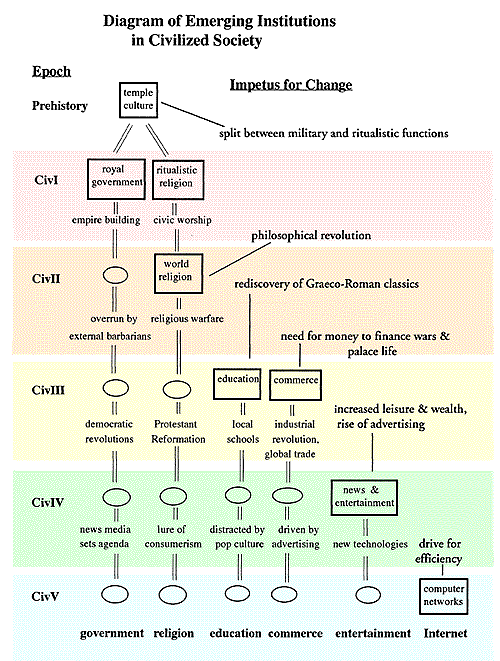|
Explanatory
Notes about this Process
The
idea here is that civilized societies grow more
complex in the course of time. Like multi-cell organisms,
they acquire a structure of specialized institutions.
These institutions detach and become differentiated
from the rest. Modern societies exhibit a pluralistic
power structure.
To a certain
extent, world history follows a process of differentiation
and detachment involving its major institutions. Specifically:
The
detachment of royal government as an institution separate
from the temple culture marked the beginning of Civilization
I.
The
detachment of the world religions as institutions
apart from government marked the beginning of Civilization
II.
The
detachment of commercial and educational institutions
from a society dominated by government and religion
marked the beginning of Civilization III.
The
detachment of news and entertainment media from commercial
society marked the beginning of Civilization IV.
The
advent of computers suggests the future detachment
of some as yet unknown institution from the society
we have today.

The
formation of institutions as organized sectors of
society takes place at the beginning of civilizations.
As the historical epoch progresses, these institutions
develop their own form of empire. A decline sets in
at the end of the epoch as the once creative institutions
become violent and obsessed with power.
After the historical epoch ends, its particular institution
survives and undergoes further change, though less
dynamically than before. There is cumulative movement
toward an ever more complex set of institutions.
The diagram shows some of the forces acting upon society's
principal institutions as they have progressed from
prehistory to the present times. (See chapter 2 of
Five Epochs of Civilization for further discussion
of this topic.)
|